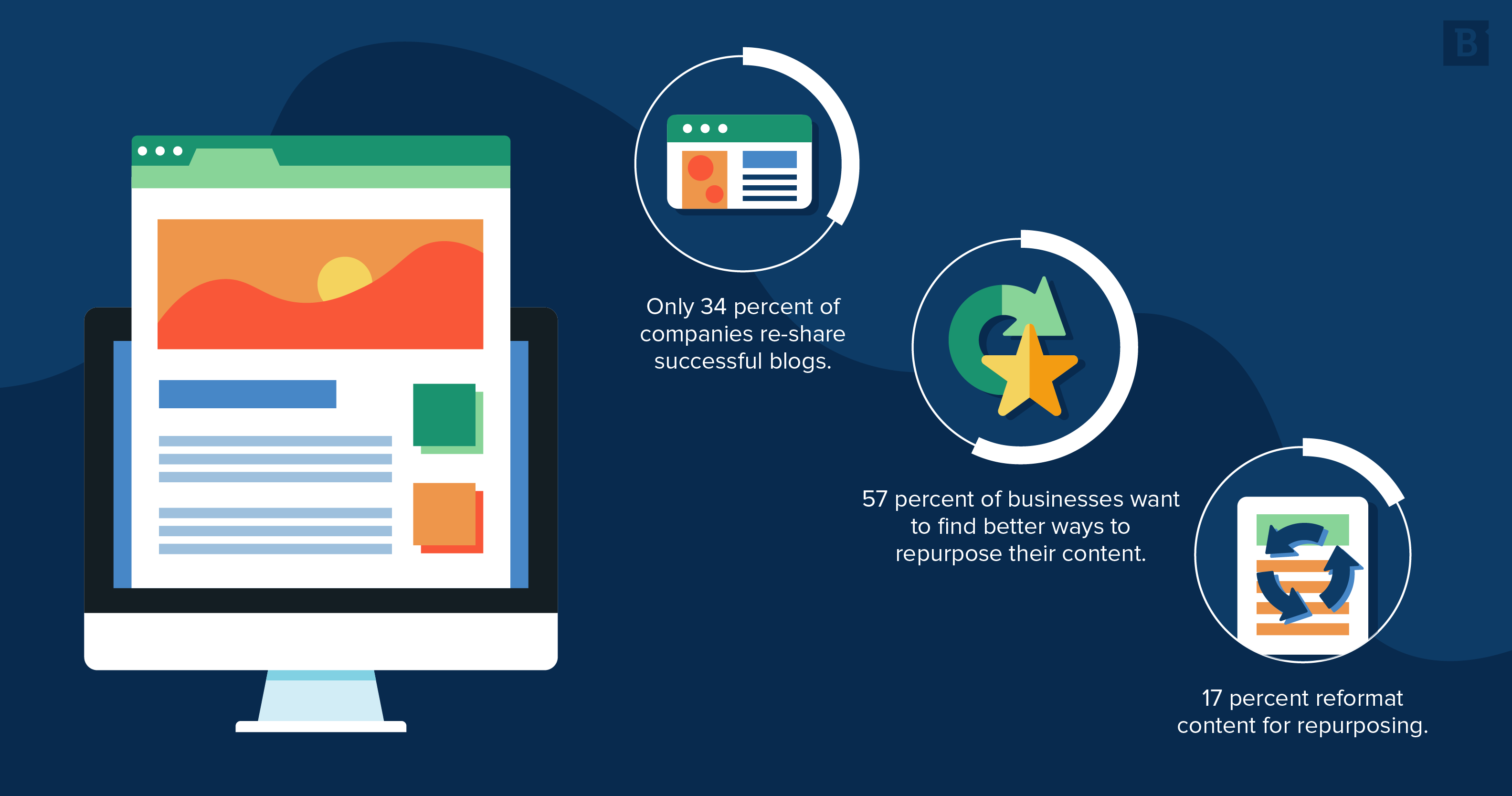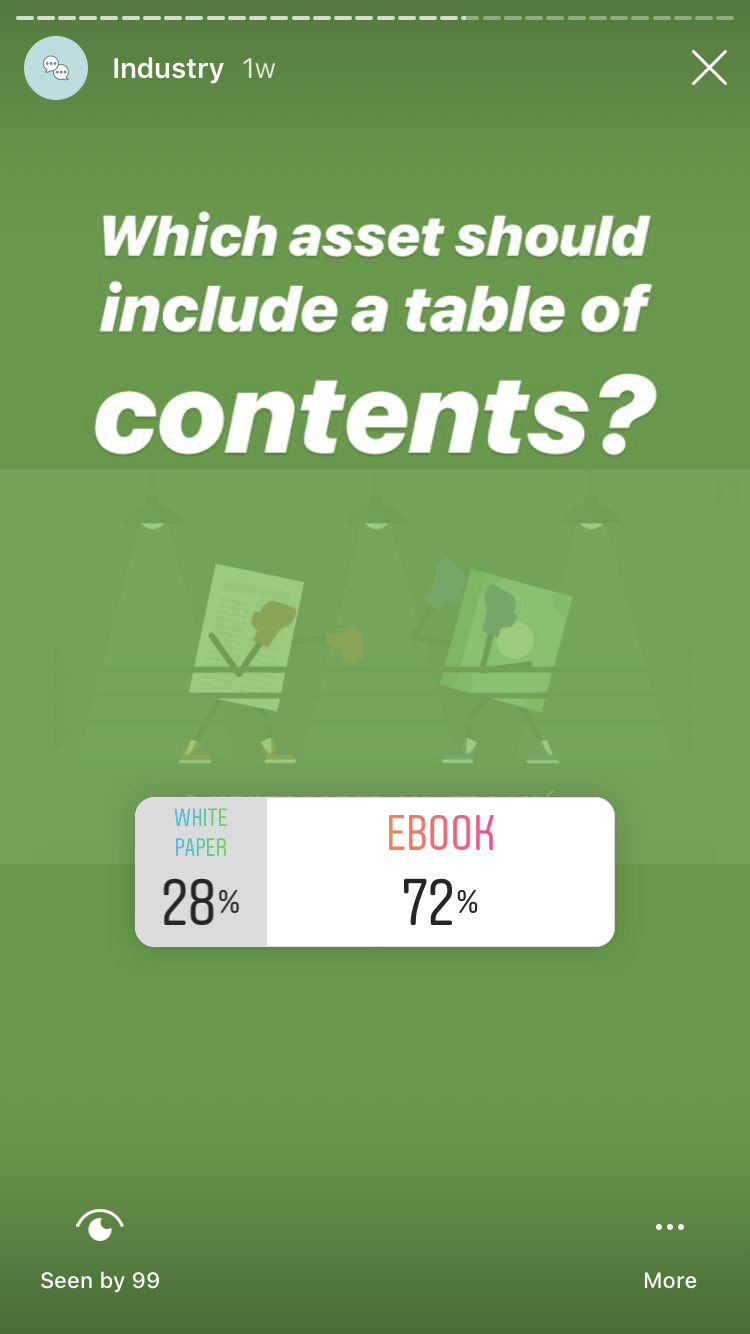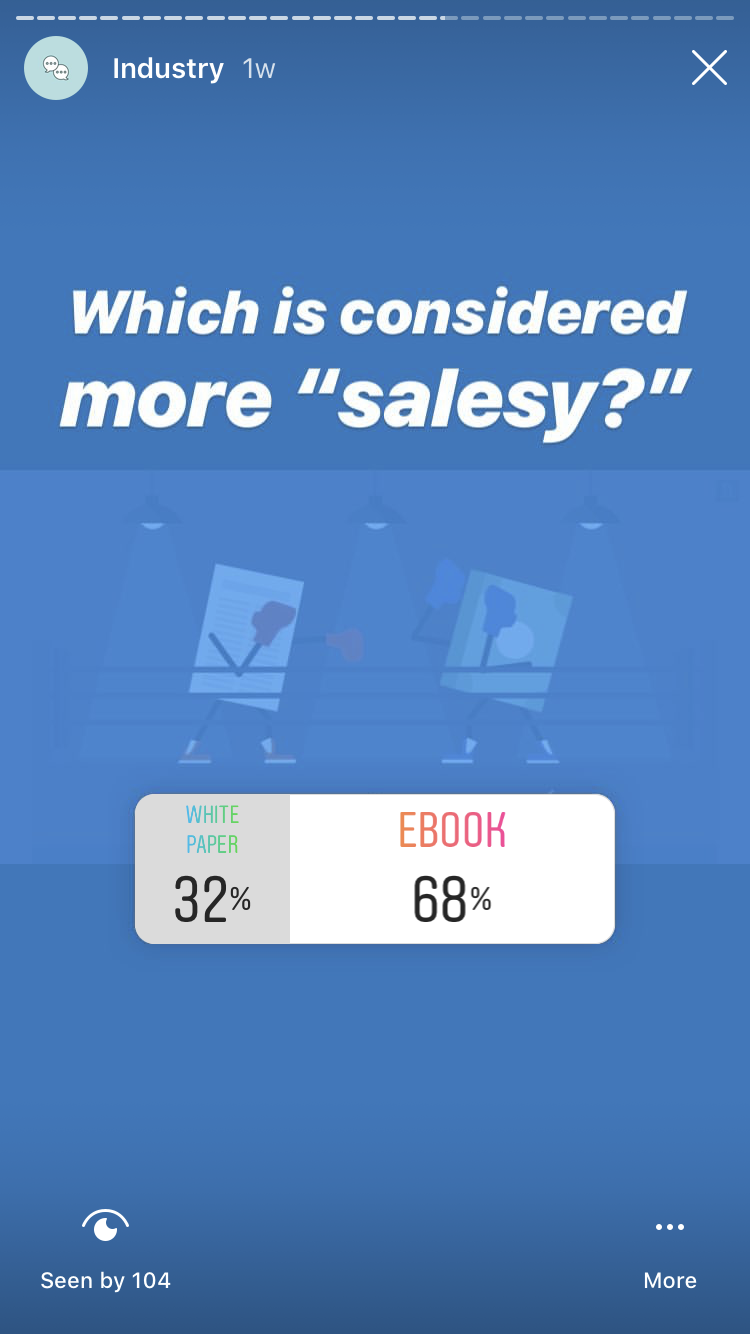We content marketers know the drill by now: Do a little research, create a piece of content, work in some interesting design elements, publish aaaand done!
We can’t just throw new blog content up on the site and call it a day. We have to make sure our audience is aware of this content, and that we’re doing all we can to grab their attention and draw readers in. As marketing expert Neil Patel pointed out, this is where that ol’ content marketing adage comes into play:
“Write less … promote more.”
And one of the best ways to promote your SEO-driven, long-form content is by repurposing it for social media posts.
Re … Repurpose?
YES! Repurpose. (It’s okay, you can say it – it’s not a dirty word.)
We get the apprehension, though – many content marketers have a deep-seeded drive to create new and original blog content. Repurposing is becoming more common, however – one study found that about 60 percent of marketers re-share successful blogs as many as two to five times.
This strategy is a powerful one, and can help your content really work for you. There are all kinds of ways you can recycle content across your social channels, and we’ll get into a few key approaches to consider and best practices to keep in mind, later on.

But why?
First, though, let’s touch on a few reasons why you should be repurposing in the first place:
You put a lot of time and effort into your content. From the research, to the writing, to the review process, to the design of any connected graphics or other visuals, a considerable amount of time, energy, blood, sweat and tears goes into creating today’s content. One survey found that it takes about four and a half hours to create the typical blog post, including time for interviews, writing and editing.
Readers are more savvy than ever, and we’re not just pumping out blogs for the sake of keywords anymore – we’re curating interesting articles that not only align with brand strategy and current SEO best practices but actually offer something valuable for readers. (But I don’t have to tell you this, right?)
The point here is this: With ~all~ that goes into today’s content creation, it’s important that each piece is more than a one-hit wonder. Reusing certain key facts included in an article, or a snippet from a graphic for a social post, makes your content all the more valuable – both for your internal marketing team and your readers.
Social packs a punch for readership and engagement: As a consumer, how often do you actually go directly to a company’s blog to get your news/infotainment? I’ll be honest – I haven’t done this in Quite. Some. Time. BUT I do regularly engage with articles and other content posted by the brands I love on their social channels. I read, I comment, I share – and chances are good that many of your audience members do the same.
Repurposing for social posts can translate to more eyeballs on your content, which also translates to more engagement between you and your audience. And followers’ ability to share can really give a single piece of content legs.
Don’t blow your marketing budget. All that time, effort and energy you put into creating content ain’t cheap. Repurposing and reusing the successful, thoughtful content you’ve already created across your social media platforms is a fantastic way to make the most of your marketing spend.
Smarter, not harder: How repurposing works
There’s much more to repurposing than simply sharing a hyperlink or putting a graphic from your blog up on your social account. Let’s take a look at a few, more creative approaches you can take with repurposing:
- Don’t bury your data. Remember that stat we included above about the percentage of companies that practice repurposing? That little fact is ideal for social sharing. It grabs readers attention and it helps garner interest in the topic, encouraging them to read on. Taking a fact, stat or other interesting piece of data and pulling it out of a story for a social post is a fantastic way to repurpose, and it can help lead readers from your social channels to your site. You can also take this a step further by gathering several key statistics from a blog or other long-form content and creating an infographic. Visuals perform particularly well on social media platforms, and streamlining the work by using previously completed research and sourcing is particularly beneficial for supporting your content and your social reach.
- Lead with a quote. Sometimes a piece of content will include a quote that’s worded absolutely perfectly, or is just plain ~juicy~. Especially when quotes like these come from recognizable or high-profile sources, it’s a strong move to make use of these in social posts. It’s good to consider any guest posts or user-generated content you might have with this strategy as well.
- Take a snippet of an infographic. This approach works especially well with longer, more in-depth infographics. Here at Brafton, we’ve created a few vertical graphics that, thanks to the amazing and tireless work of our design team, just beg to be broken up into smaller snippets. These “factlets” can help you highlight a particular stat or point in your previously created graphic. And readers love to see graphics or imagery included in social posts.
- Turn a blog into a podcast script. Our friends over at Castleford Media suggested this one. Sometimes readers may tire of, well, reading. Others might simply enjoy listening to a podcast in the car, or while they’re doing another activity that doesn’t lend itself to multitasking. Whatever the case, repurposing a blog post into a podcast can be a beneficial way to capture audience members that prefer to listen.
- Create a video based on a blog. Videos are a strong way to get followers to stop scrolling and start engaging. Taking the content of a blog and leveraging it to create a short video is one way this can come to life through repurposing. You can even lead viewers from the vid on social to the blog on your site for more details.
- Pose an interesting question based on white paper content. White papers are some of the most in-depth collateral many brands offer, and they’re often used to target sectors of the audience that have made their way pretty far down the funnel. Typically, white papers are long-form pieces of content that are heavily researched, making them ideal candidates for repurposing. One way to approach this is by leveraging the subject matter of a white paper to pose a question. As the Digital Marketing Institute suggested, making this query creative and thought-provoking can help better capture your audience’s attention. This strategy can even help encourage readers who may not have otherwise engaged with the white paper to click and check it out.
Getting more channel specific, you can also consider repurposing in other ways, according to the nuances of the particular social platform:
- Create a Pinterest board: Pinterest is one of those channels that’s tailor made for more image- or graphic-heavy content, typically in the B2C arena. Unfortunately, though, it’s not typically a top-targeted channel for marketers, despite the opportunities for engagement. Now that more users are flocking to Pinterest – the site now boasts more than 250 million active users – marketers should consider looking at Pinterest in a new light.
Consider creating a Pinterest board by grouping together similar categories of images or graphics that your brand has already created. Don’t be afraid to get creative here, and play a little with the visual resources you have on hand. - Break up an eBook or blog for an Insta story: This is an approach that we took here at Brafton recently. Our team created a few poll questions based on previously created content for our Instagram story.


As our own Social Media Strategist Annie Keller pointed out, even though followers typically flip through Stories pretty quickly, this is still an effective way to repurpose content and educate our audience.
Ready to repurpose? Keep these tips in mind
Before you start chopping up infographics and grabbing stats from blog posts, there are a few key best practices in mind to make sure that your repurposing strategy provides value:
Evergreen content first
One of the keys to successful repurposing is to leverage evergreen content. Readership and engagement will fall off quickly if you’re resharing topical news from two years ago, or infographics with old data that simply isn’t accurate anymore. Pro tip: There’s nothing stopping you from updating old content and then leveraging this for repurposing. 😉
Target evergreen pieces first, especially if you’re new to repurposing.
Use your best and brightest infographics
Infographics can offer all kinds of opportunity for repurposing, but as with your written content, there are likely graphics that are more eye-catching or creatively designed than others. This might have to do with all kinds of factors, not the least of which is the subject matter. A graphic on a gray background, for instance, probably isn’t a good candidate to select here. When it comes to repurposing on social, the goal is to draw eyeballs in and capture attention. Choose graphics that are as relevant and striking as possible.
Tap your top-performers
Did your brand create a blog, video or other piece of content that really hit it out of the park? You can take this content marketing win even further by repurposing it. Check into your analytics to find the pieces that spoke to your audience the most and saw the highest levels of engagement. Then, consider one of the above strategies for repurposing it on social.
Don’t go overboard – not everything will warrant a repurpose
Repurposing is a robust and valuable strategy, but like anything, it’s best when executed in a more selective way. Not every piece of content deserves a reshare, so it’s important to choose wisely.
Consider different social media platforms and understand the nuances
In the same vein as the point above, once you do decide upon the assets that are good candidates for repurposing, it’s time to consider which social channel will best support them. Think about the tone of the content itself, and then try to match it with the social media platform with which it best aligns. A white paper that’s more formal and informational, for instance, might do the best on LinkedIn, with its more professional and business-geared feel. A fun, conversational blog, on the other hand, might be tapped for a Facebook post.
It’s not just for rainy days
Repurposing isn’t just for the days when you can’t come up with originals – it can absolutely be used in conjunction with your current marketing strategy. For instance, if you’re working to draw attention to a certain topic or service area within your current campaign, take a look through your past content to see what you can dig up. You might be surprised to find previously created articles or graphics that fit like that last piece of a puzzle into your current content plans.
Repurposing the content your brand has already created to support your social presence is a win-win. You might find that once you start, it’s difficult to stop – consider going beyond social and repurposing for things like email drip campaigns as well!
Now, get out there and make the most of your content!





